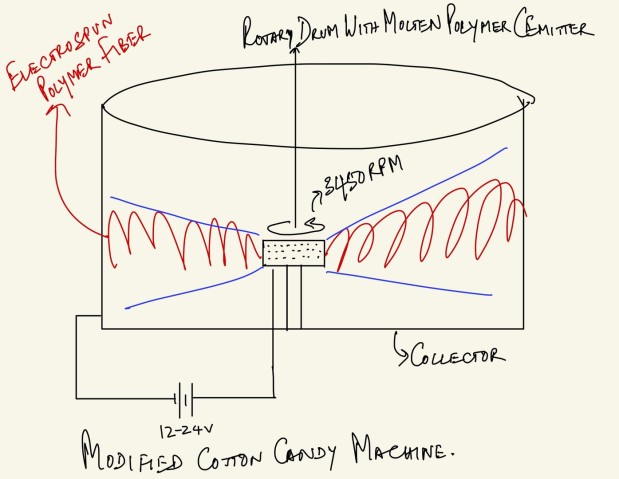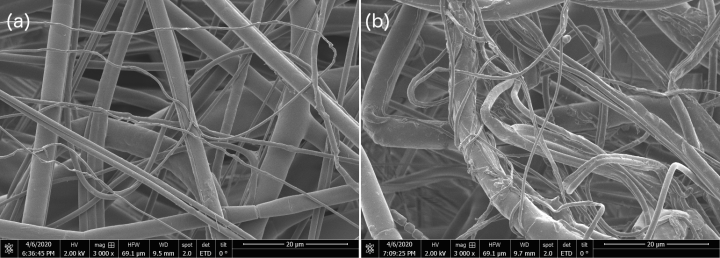Prof. Mahesh Bandi and his team applied a high voltage electric field to a cotton candy machine, poured in a powdered polymer, and created a fabric for masks that could help combat the spread of COVID-19.
Updated November 25, 2020
"Electrocharged facepiece respirator fabrics using common materials" published in the Proceedings of the Royal Society A: Mathematical, Physical and Engineering Sciences.
Updated April 15, 2020
With COVID-19 causing a shortage of essential protective material like face masks Professor Mahesh Bandi, who runs the Nonlinear and Non-equilibrium Physics Unit, has found a way to manufacture masks, inspired by the principle of N95 ones, using a process developed in-house at OIST.
“Neither the homemade cloth masks nor most commercial masks can filter the COVID-19 virion,” said Professor Bandi. “The N95 mask is the only available design capable of stopping the virion because it contains an electrocharged layer.”
Although the technique used to manufacture these masks is hard to replicate with everyday material, Professor Bandi stressed that it’s not impossible.
“A simple way to generate the necessary fabric is to use a slightly modified cotton candy machine,” said Professor Bandi.
A cotton candy machine is made up of a drum that sits on a fast-spinning container. The container has small holes in it which, in traditional situations, the caramelized sugar flows through before it turns into cotton candy. Professor Bandi modified the machine by setting up a 12-24 voltage DC electric field using a regular car battery.
Instead of sugar, Professor Bandi poured a powdered polypropylene polymer into the drum. This polymer could be created from any polypropylene plastic bottle. When the machine began to spin it processed the polymer to generate a fabric comprising of electrocharged nanofibers.
From there, making the mask was relatively straightforward. Two batches of the fabric at a zero electric field were produced for every three batches of the fabric at an electric field of 12-24 voltage using a car battery. The fabrics were pressed between two clean, flat surfaces. They were then laid out to form five layers. The fabric created at a zero electric field served as the outer layers, whereas the ones created at 12-24 volts formed three inner layers. This layered material was then cut into 6 cm x 6 cm pieces, folded, and stitched together.
By using this process, Professor Bandi fabricated the material and method necessary to replicate medical-grade face masks. In a time of crisis, without access to the traditional N95 masks, this alternative may prove to be lifesaving. To find out more, have a look at Professor Bandi's web page N95-electrocharged filtration principle based face mask design using common materials.
This project was interdisciplinary and included the help of many collaborators throughout OIST including Professor Matthias Wolf who leads the Molecular Cryo-Electron Microscopy Unit, Ms. Noriko Ishizu and the team from the Engineering Support Section, and the OIST Imaging Section.







